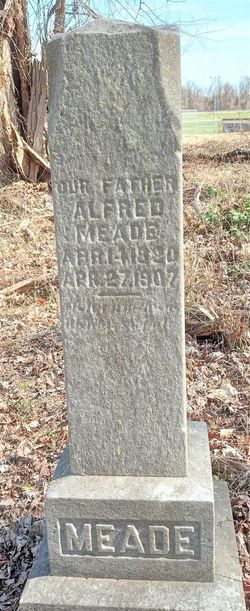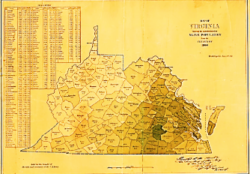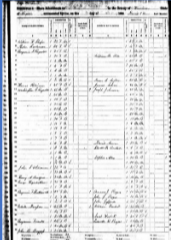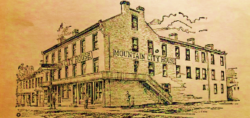Our Diverse Heritage: Marion’s Black History Part 1
Celebrating Black History Month in Marion County
February 5, 2024
Special thanks to Dr. M. Raymond Alvarez, DHA, MPA, FACHE for providing the material for this series.
Part 1: West Virginia’s First Civil Rights Case, Meade vs. Johnson
Black History as a celebration for a month originated by black faculty and students at Kent State in February 1969. Their first celebration of the month was in February 1970. Today it has become one of the most celebrated cultural heritage months on the calendar. This year’s themes highlights those in the arts. When asked by the MCCVB to think about the ‘history’ in our county, I jumped at the chance. But first, I asked one of my faculty peers and close friends, Dr. Greg Hinton, for his perspectives on reflecting key leaders over the years. Dr. Hinton helped me with much historical research as you will see noted in future commentaries. We started making lists from the 1850s, when we were part of Virginia. I am going to spotlight some of those amazing persons who not only were prominent to our community and state but have left us a heritage to appreciate and move forward without forgetting the roots of our community. There are many lessons to be learned from all ethnic cultures, but it is helpful to look back and reflect on many stories.
1860 Slave Schedule
I like to start with the fact that as a child in the local school system in the late 1950s and 1960s, we did not get a true picture of slavery and how West Virginia came to be a state. In fact, most of us supposed that there was no slavery here and that is why the western counties split from the eastern side of Virginia. 1863 statehood was linked to freedom in our minds. Years later in college, I learned that on December 6, 1865, Congress ratified the 13th amendment abolishing slavery in the United Stated. That was when slavery ended in WV. So let us go back to some early freed men and women who found an
inclusive community where they could prosper by the late 1850s to explore some of these citizens who made a lasting, if unknown impact, on our community. Alfred Meade is an excellent example of early freed men who made a difference.
The first civil rights case to be heard in a West Virginia court began as a contract dispute between a former slave, Alfred Meade of Fairmont, and the former governor of Virginia, Joseph
Johnson of Harrison County. When filed in 1866, this case received much national attention, even though Johnson eventually won. It is little known today compared to Strauder v. West Virginia (1880) or Williams v. Board of Education of Tucker County (1898). This case was a breach of contract; however when the court decided based on the race of the individual, it became this state’s first civil rights issue. Alfred Meade, born a slave in Richmond, Virginia on April 4, 1820, was owned by George Wythe Munford, who served as Virginia’s Secretary of the Commonwealth during Johnson’s term as governor. Johnson, who owned property on Simpson Creek in Harrison County and founded Bridgeport, served five terms in the Virginia House of Delegates and 13 years in the U.S. Congress as a representative from Virginia. In March 1851, he was elected governor of Virginia. Around 1852 in Richmond, Meade met Ruhama Coplin, a slave owned by Johnson. Since Munford served in Johnson’s cabinet, this marriage was arranged or familiarized by Munford. They married around 1854.
,,,,,The 1860 Slave Register Harrison County shows Johnson’s slaves midway in right column.
Around the expiration of Johnson’s term, Meade worked in Richmond hotels and had already purchased his own freedom from Munford. Johnson, still owning Ruhama, agreed to an arrangement that enabled Meade to pay for Ruhama’s freedom in installments. Before returning to Harrison County, Johnson granted that Meade could live near Bridgeport, fending for himself. Thus, Meade settled in Fairmont around 1856. With Meade’s experience in some of the finest Richmond hotels, he quickly
found employment in Fairmont. After returning to his Bridgeport farm, Johnson continued to support the Confederacy and was pro-slavery. The 1860 Slave Census of Harrison County indicated that Johnson’s slaves included a 33-year-old female (Ruhama) and her four children from the marriage to Alfred.
Meade soon became well-known as porter and head waiter at the Mountain City House. At the time, Fairmont had a population of 700 but the railroad created new markets for the fledgling coal operators, which included James Otis Watson and Francis Pierpont. When the Civil War interrupted coal field development, it also split the politics of the Monongahela Valley. Johnson returned to Staunton to assist the Virginia government. Meanwhile, the issue of Ruhama’s purchased freedom was unresolved and did not come about during this time. By 1862, Meade and Ruhama divorced, which further complicated the issue of her freedom. Meade married former slave Helen Wilson of Fairmont in 1863.
Request a copy of our Civil War or Marion County History Guide here.



